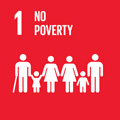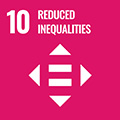- Docente: Milena Bernardi
- Credits: 8
- SSD: M-PED/02
- Language: Italian
- Teaching Mode: In-person learning (entirely or partially)
- Campus: Bologna
- Corso: Single cycle degree programme (LMCU) in Primary teacher education (cod. 8540)
Learning outcomes
At the end of the course the student knows
- the cultural context in which children's literature has historycally found itself;
- the children’s books and the complexity and ambiguity that characterizes them;
- knows and analyzes the imagery and interprets the textes;
- knows and analyzes the classic and contemporary novels, picture books, fairy tales, and numerous examples of books for childrens.
- knows how to propose the storytelling languages, and the student knows different comunication modes in the educational relationship.
- is able to make informed choises in publishing children's books.
Course contents
The course analizes the children's literature with contentsinterdisciplinay perspective and hermeneutic analysis.
Key words contents:
Children's literature, fairy tales collections, adventures, stories, characters, plots, literary genres, classical and contemporary authors.
Childhood finds herself in the literary metaphors;childhood and representations of early childhood.
The fairy tale: a special literary genre with Hard themes;
Theory and history;
Publishing;narratology;novels for children and classic novel;
School and novel, school and fairy tales;
The difficult relationship between school and novel;
Education and reading; pedagogy and storytelling;
Poetry, illustration and storytelling;imaginary and children's literature; literature and complexity.
Teacher training. Educational relationship.
Teacher as caregiver and children's literature.
Readings/Bibliography
All students must read:
Milena Bernardi, Letteratura per l'infanzia e alterità. Incanti, disincanti, ambiguità, tracce. Franco Angeli, Milano, 2016
Each student must choose 1 critical essay among the following:
Antonio Faeti, I tesori nelle isole non trovate. Fiabe, immaginario, avventura, nella letteratura per l’infanzia. Junior edizioni, 2018
M. Bernardi, Infanzia e metafore letterarie, Bononia University Press, Bologna, 2009
M. Bernardi, Milena Bernardi, [https://cris.unibo.it/handle/11585/738325], Pisa, Edizioni ETS, 2019
S. Barsotti, L. Cantatore (a cura di), Letteratura per l'infanzia. Temi, forme e simboli della contemporaneità, Carocci, 2019
A.Faeti, Gli amici ritrovati, Rizzoli BUR
M.Bernardi, Il cassetto segreto, letteratura per l'infanzia e romanzo di formazione, Unicopli, Milano, 2011
W. Grandi, Gli ingranaggi sognati. Scienza, fantasia e tecnologia nelle narrazioni per l’infanzia e l’adolescenza, FrancoAngeli, Milano, 2017
Narrative texts:
A collection of fairy tales in its full version, among which the student must have read 10 fairy tales at least. For example, one of the collections of the following authors can be chosen: J. e W, Grimm, H. C. Andersen, I. Calvino, G. Pitrè, L. Capuana, G.B. Basile, O. Wilde.
1 contemporary or classic novel for children chosen by the student;
1 picture book or 1 illustrated collection of poetry for children chosen by the student.
Erasmus student: Critical essay, Milena Bernardi, Letteratura per l'infanzia e alterità. Incanti, disincanti, ambiguità, tracce. FrancoAngeli, Milano, 2016. + collections fairy tales J. W. Grimm, Fiabe, ED. Einaudi
Teaching methods
Lectures. Brainstorming, discussion and debate abaut literature, movie, theater, media. Storytelling.
Assessment methods
- knowledge learned on discipline; the theoretical and interpretative references concerning children's literature;
- critical and methodological skills;
- interdisciplinary knowledge useful to analyze the children's literature;
- knowledge of educational contexts for early childhood and primary school;
Final score based on ../30 (18 is considered the minimum to pass the exam).
Inscription to the exam on Almaesami website.
If rejected at the exam, it is possible to have a second chance.
-
Teaching tools
Reading aloud, Storytelling, books, picture books, videos, etc
Office hours
See the website of Milena Bernardi
SDGs




This teaching activity contributes to the achievement of the Sustainable Development Goals of the UN 2030 Agenda.
